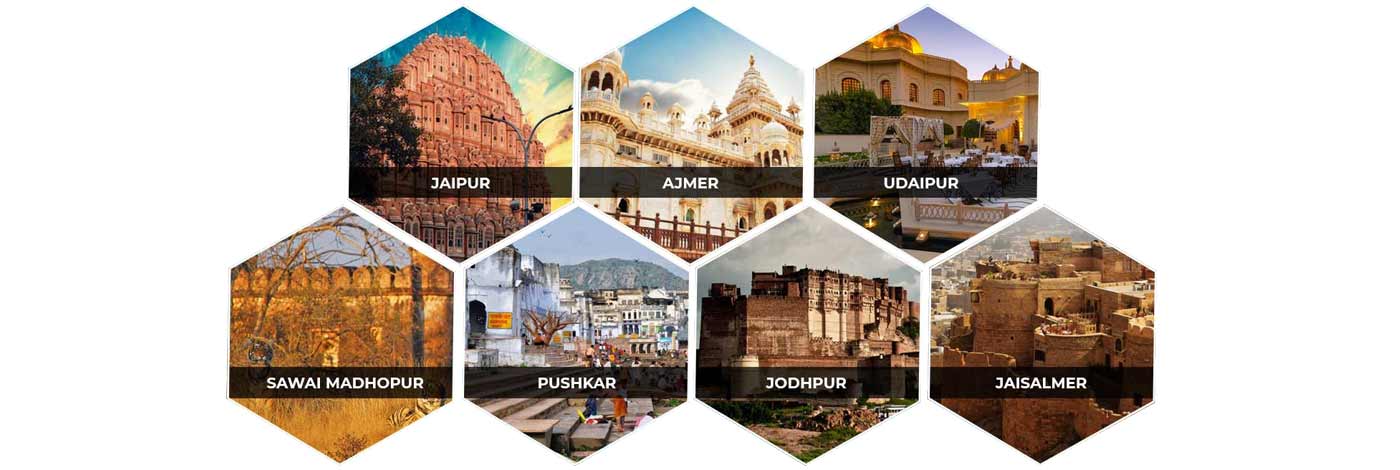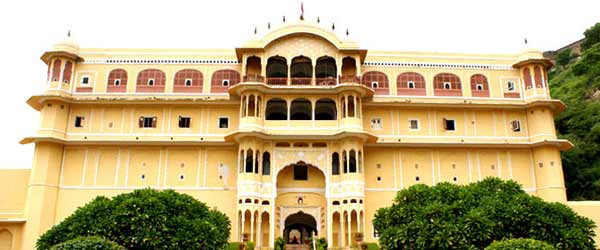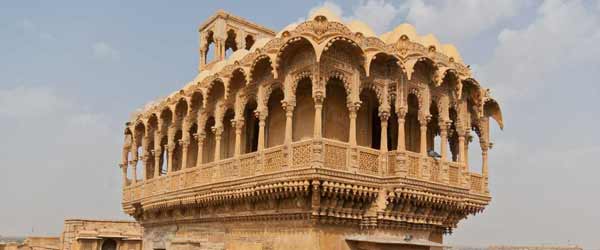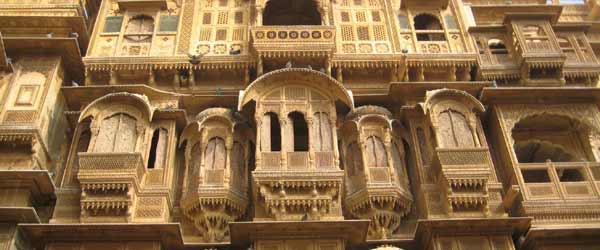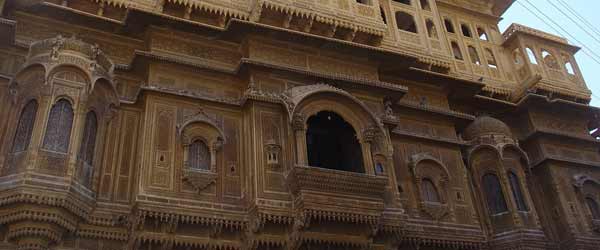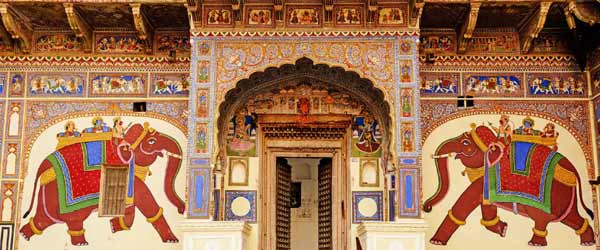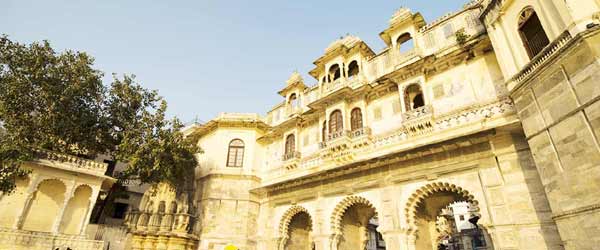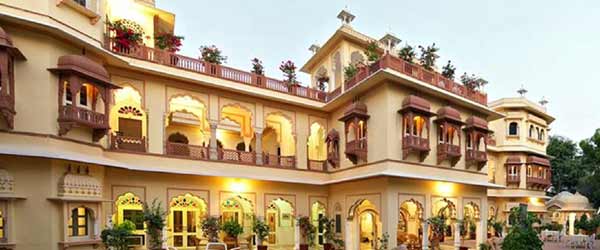
Bagore Ki Haveli Udaipur
Bagore Ki Haveli is an old royal building situated in front of the Lake Pichola at Gangori Ghat in Udaipur. This is one of the top places to visit in Udaipur.
Built by Amir Chand Badwa, the Chief Minister of Mewar Royal Court, it dates back to the 18th century. Maharana Shakti Singh of Bagore, who resided in the haveli, incorporated three storeys to the main structure, in 1878 AD. This ancient edifice has more than hundred rooms and displays delicate carvings and glass work. After being deserted for 50 years post-independence, the haveli was finally handed over to the West Zone Cultural Centre in 1986 for restoration. Today, the Haveli looks glorious and also houses a museum in its premises with paintings and costumes of the Royal Kings.
The interiors of the Haveli are embellished with intricate and fine mirror work. One can also see the private quarters of the royal ladies, their bath areas, dressing rooms, bed rooms, living rooms, worship rooms and recreation rooms along with a number of balconies, courtyards and corridors. The Chambers of the Royal Ladies still bear fine frescoes of the Mewari style and there are glorious coloured glass windows in some of the rooms as well as two peacocks made with coloured glass mosaics that display the superb skills of the finest craftsmanship.
In the museum, the aristocratic culture of Mewar has been portrayed. Premium mural paintings of Rajasthan designed in Mewar, along with the costumes of the royal kings and modern art are notable highlights of the museum. Exclusive things of Rajputs like jewellery boxes, dice-games, hukkas and pan boxes form the collections of the museum. The museum also displays nut crackers, hand fans, rose water sprinklers, copper vessels and other items of the erstwhile rulers. Original paintings of Mewar are displayed in the Queen's Chamber.
History of Bagore Ki Haveli
Shri Amarchand Badwa, who served as the Prime minister of Mewar kingdom during the reign of Maharanas Pratap Singh II, Raj Singh II, Ari Singh, and Hamir Singh from the period of 1751 to 1778, built Bagore Ki Haveli. Following the death of Amarchand Badwa, the haveli came under the possession of Mewar royal family and became the abode of Nath Singh, a relative of the then Maharana.
In 1878, Maharaj Shakti Singh of Bagore further extended the haveli by building the triple-arched gateway and since then it is known as Bagore ki Haveli. Till 1947, the haveli remained in the possession of Mewar state.
Haveli in Rajasthan
Rajasthan Havelis is named after the Rajputs who were kings as well as brave soldiers. They have created a much spectacular building where they used to stay popularly known as Havelis, which helped as a resident for the royal family.
These monuments are evidence of the remaining example of the state rich architectural heritage. The much-talked Havelis of Rajasthan are Samode haveli, Patwon Ki Haveli, Nathmalji Ki Haveli, Shekhavati Haveli, Mandawa haveli and many others.
History of Havelis in Rajasthan
From 1830s Haveli became an important building in Rajasthani regions of Shekhawati and Marwar. The marwaris used to commission artists to paint the havelis. These were a status symbol for the merchants and traders. These were also the dwelling places of the joint families that offered comfort away from the day-to-day tensions of the world. There would be one large gate at the entrance and the mansion would be closed from the other sides. These were spacious abodes that were richly decorated.
Features of Havelis in Rajasthan
The main features of these havelis were chhajjas (sunshades), jharokhas (balcony windows) and jalis (screen windows). These huge mansions were usually built around a courtyard with darwazas done in beautiful architectural elements. The marwari havelis of the Shekhawati region have murals with remarkable colours. The motifs on the walls are varied from everyday scenes and subjects inspired by the west. An amazing feature of these havelis was the intricately carved wooden doors.
Architecture of Havelis in Rajasthan
The havelis of Shekhawati consist of 2 courtyards - an outer one and an inner one. The outer courtyard is for men. The inner courtyard (aangan) is exclusively for women. A large Haveli with two or three stores can have three to four courtyards. The towns and villages of Shekhawati are renowned for the frescos on the walls. One of the most well known Haveli in this regard is the Patwa havelis of Jaisalmer. The stone carved jharokhas are a major tourist attraction here.
Other places where one can come across grandiose havelis are Churu, Jhunjhunu and Sikar. The havelis were mainly painted in blue, yellow, green, indigo and maroon. With the advent of the 19th century the motifs on the walls underwent a change. New themes of telephones, trains, cars, balloons, British hunters, gramophones, the paintings of the Haveli owners became popular.
Famous Havelis in Rajasthan
From Jaipur to Jaisalmer and from Bikaner to Jodhpur, the colourful Havelis in Rajasthan tell again the magnificence and splendour of the former times. Tourists often plan their tour to Rajasthan to get a sight of these Havelis in Rajasthan. Following are the famous Havelis in Rajasthan:
 +91 9549279999
+91 9549279999 